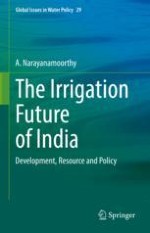2022 | OriginalPaper | Buchkapitel
11. Effects of Urbanisation on Tank Irrigation: A Study of Tamil Nadu State
verfasst von : A. Narayanamoorthy
Erschienen in: The Irrigation Future of India
Aktivieren Sie unsere intelligente Suche, um passende Fachinhalte oder Patente zu finden.
Wählen Sie Textabschnitte aus um mit Künstlicher Intelligenz passenden Patente zu finden. powered by
Markieren Sie Textabschnitte, um KI-gestützt weitere passende Inhalte zu finden. powered by
